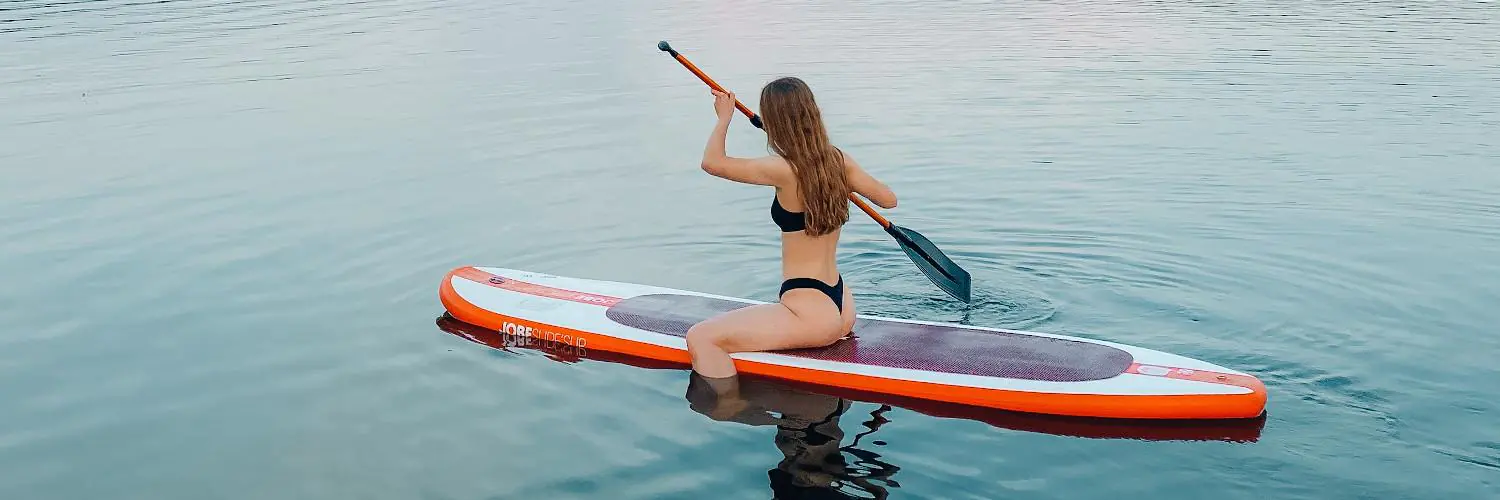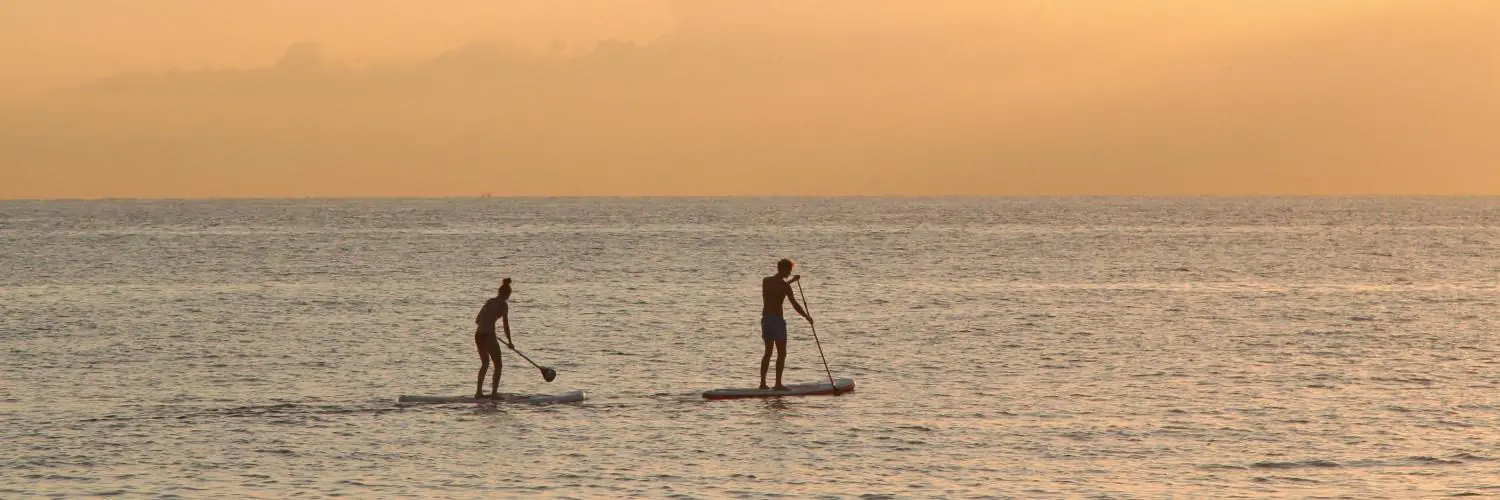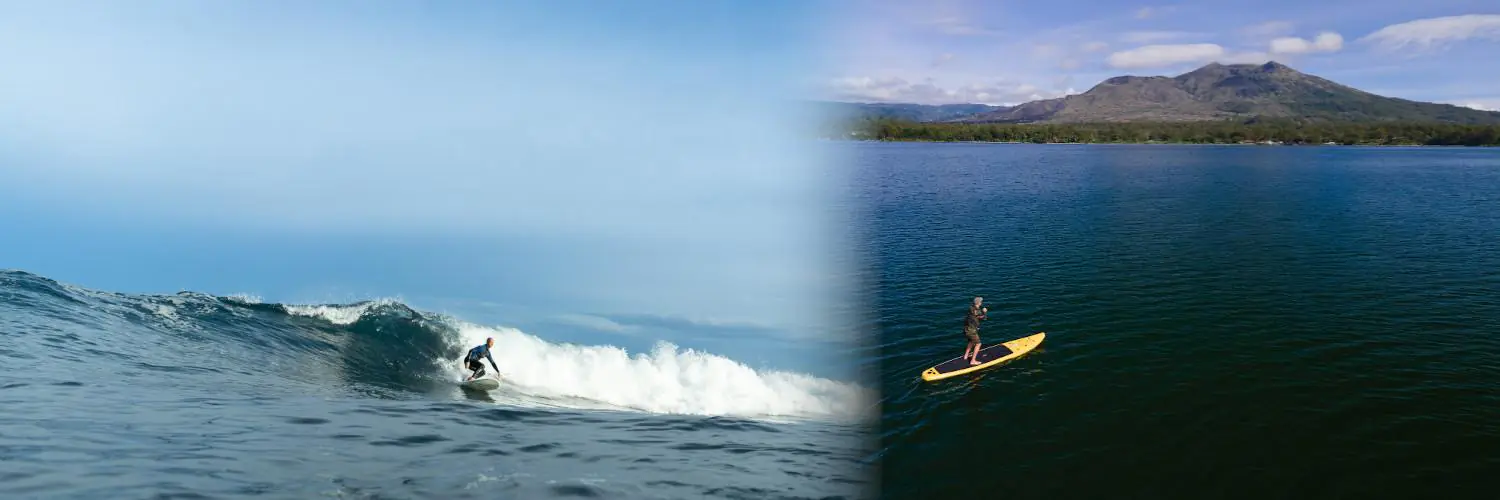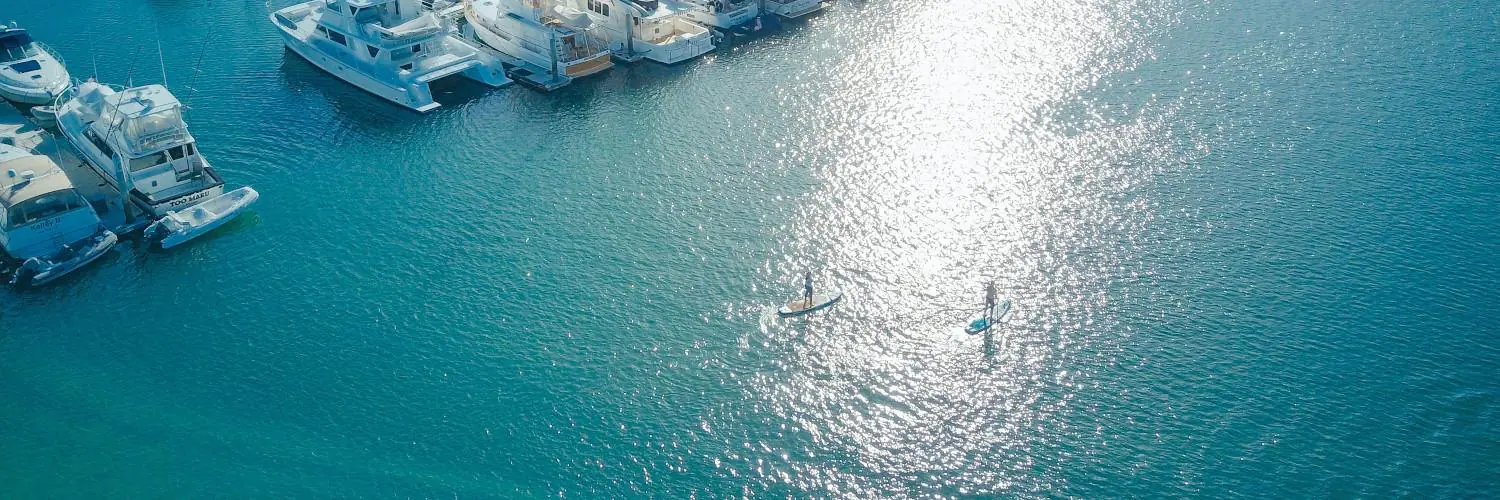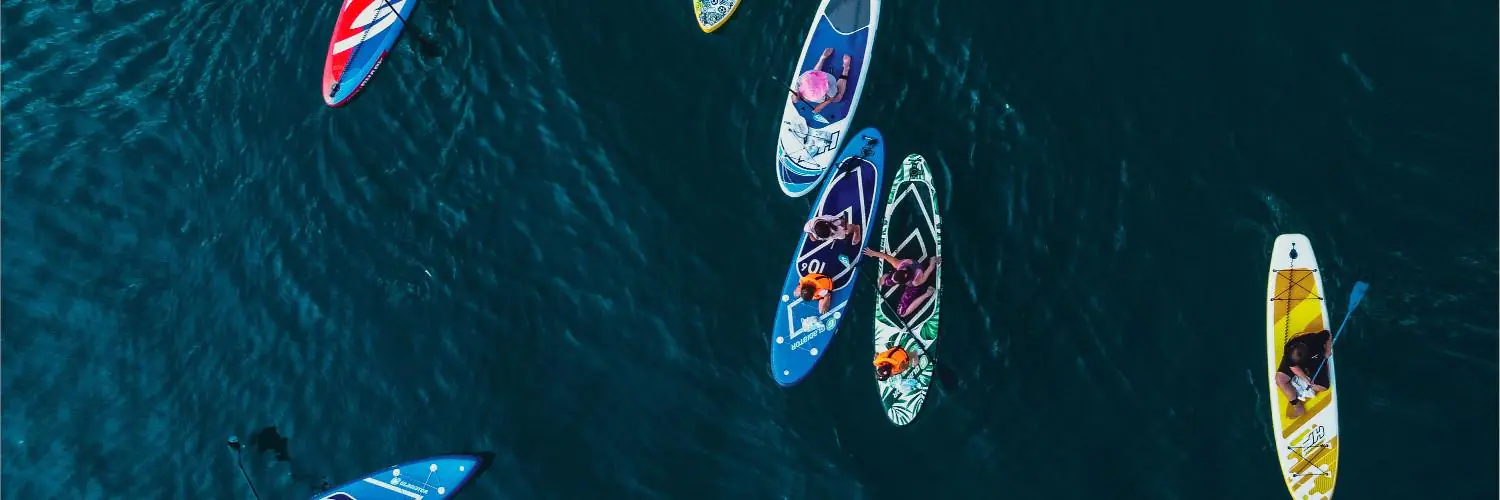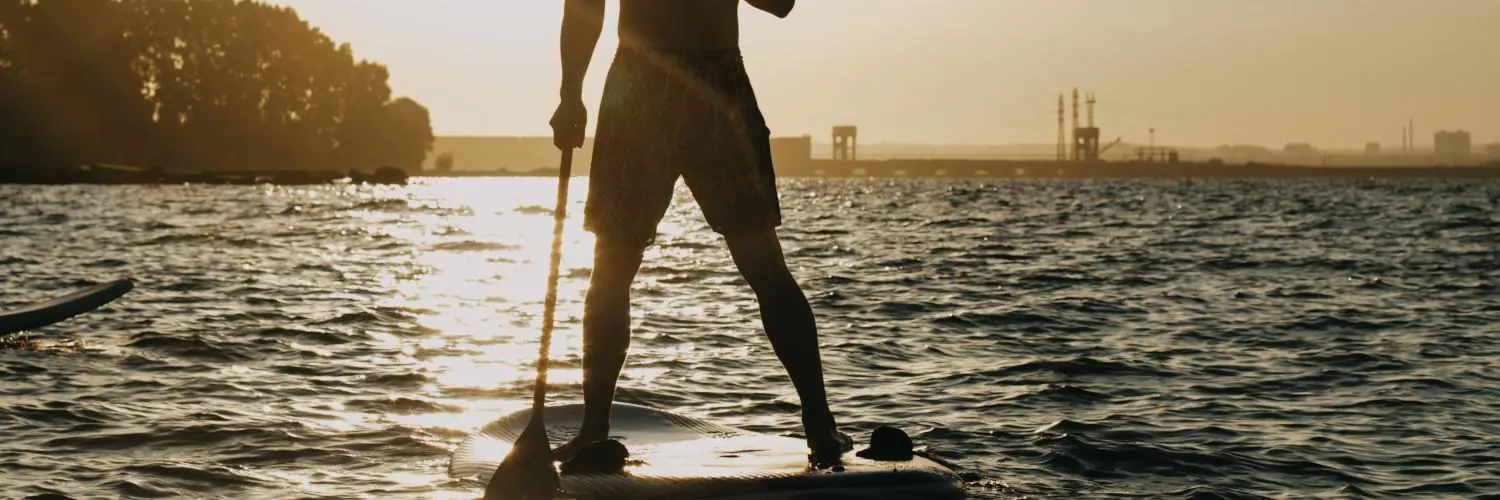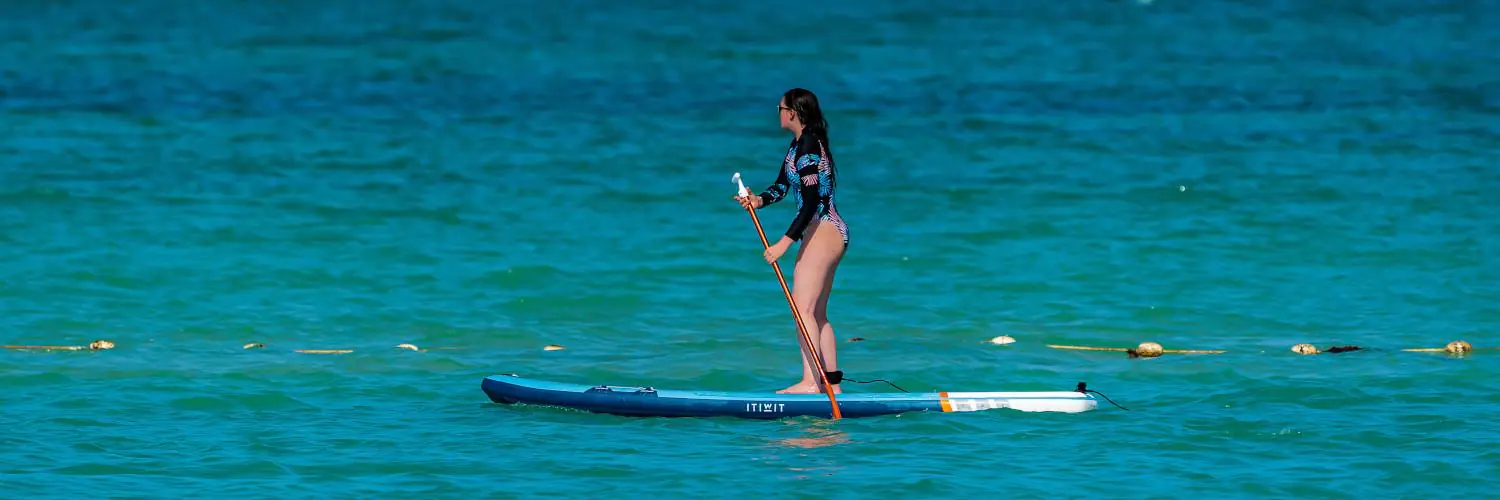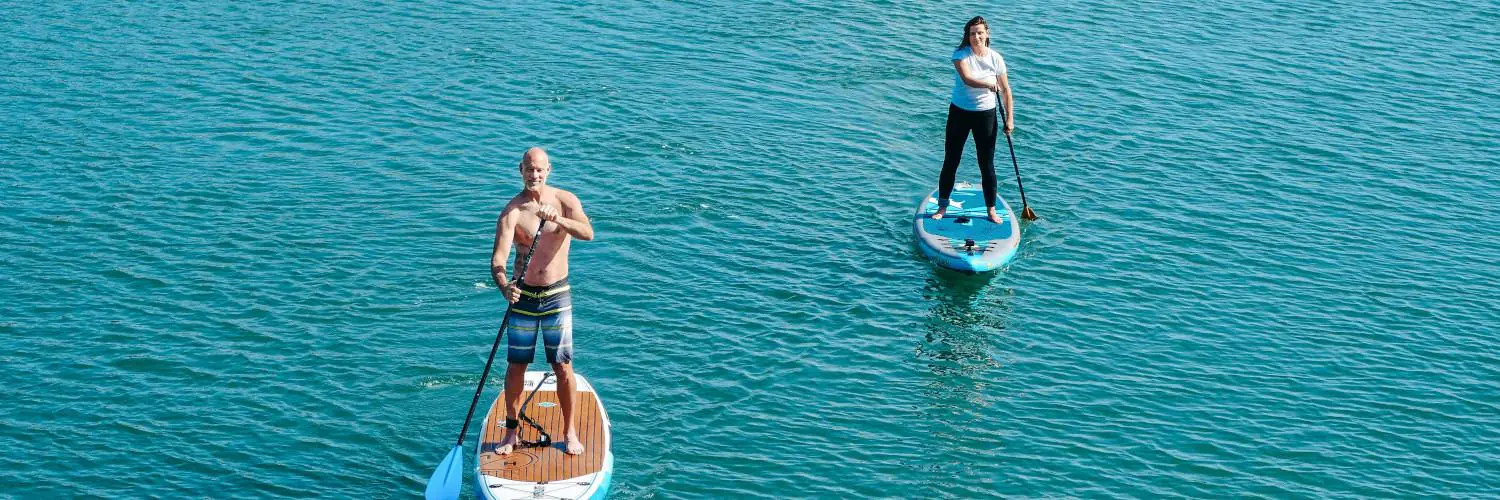Most solid paddle boards are made of fiberglass and epoxy resin layers over hollow wood or foam cores. Some inexpensive SUPs are made of foam. Some high-end paddle boards are made of carbon fiber over foam cores. And inflatable paddle boards are made of PVC plastic outer layers over an inflatable core. Inflatable SUP manufacturer offers a range of boards, and there are usually a variety of construction choices.
How the paddleboard is made and the materials used have a big influence on how a board paddles, how long it may last, and the price you pay. There are pros and cons for each construction, and so choosing the best SUP for you can be a little confusing. Each brand will have slightly different ways of doing things, but these construction methods explained below pretty much have it covered.
Table of Contents
Single Skin Construction
In the single skin technology, construction methods start with the drop stitch; thousands of internal threads are used between the two drop stitch layers, which, when filled with air allow the board to only expand to a certain point before they pull tight and form the rigid SUP’s shape. Drop stitch fabric on its own isn’t airtight, so a liquid PVC layer covers the drop stitch which, once dry, creates an airtight seal. This is the single skin.
Advantages and disadvantages of single skin construction
Single layer boards are light and cheap. They are more affordable and easier to carry. These boards are good for beginners because they are easy to handle and cost less. Less material makes for a very lightweight SUP and is suitable for someone working on a tight budget, however this construction method produces boards that have a slightly lower max weight than the stringer or laminated versions. With boards using this construction from the decent brands starting at a minimum price, they’re great value. On the down-side, they’re not going to be quite as durable or offer such an authentic paddling experience as the other types due to having fewer layers and a little more flex in the board.
Stringer Technology
After the single skin construction, there are boards that come up with Stringer Technology. The majority of the paddleboard is the same as the single layer; drop stitch with a single coating of PVC. The difference is the addition of the ‘stringer’. The concept comes from traditional surfboard manufacture, where a thin ‘stringer’ runs down the center of the board from nose to tail to provide increased rigidity. On inflatable SUPs, the stringer is a fairly wide PVC strip glued down the center of the board.
The addition of the stringer is all about increasing the rigidity of the SUP which reduces flex as you stand on the board and paddle. The extra bit of material creates a more solid platform, that in turn makes for a better paddling experience. As it’s only a small addition of material, it doesn’t add that much weight, and the cost for these SUPs are still good. Although the stringer is a good addition it won’t change the entire board. They come in a low price tag, provides flex, and obviously increased stiffness than the single skin construction.
Fusion Double Layer Construction
The laminated double layer construction is the premium standard technology in the inflatable SUP manufacturing process. The lamination process means that there are no longer cosmetic wrinkles or bubbles on the board’s surface. These inflatable SUPs are 20-25% lighter and 25-30% stiffer than those using a glued double layer construction. That can mean around a 2kg saving in weight, which is a lot! These SUPs can come out more expensive than the other constructions because they ensure better performance than any other board type. If you are looking for quality, we suggest you go for a laminated double layer board every time. They are stiffer, stronger, durable, lightweight, and can maintain their shape.
Woven Fusion Double Layer Technology
The Weave Fusion double layer construction is the premium technology in the inflatable SUP manufacturing process that was introduced few years ago. They are stiffer, stronger, durable, maintains shape, and are light weight which makes them an automatic choice for many paddlers. They are a more expensive than the others, but their features and qualities makes up for that. The Woven process means that the board is even lighter and stiffer, and admittedly this is stiff and light in comparison to the already stiff and light material of fusion double laminated. This new material really comes into its own for riders that are paddling a lot on river and canal settings or riders that struggle carrying heavy things, or may be for a shorter, lighter rider or a paddler with back concerns.
Glued Double Layer Technology
Glued double layer construction is now only reserved now for boards that need to be super strong (river / rapid use) or cheaper brands using outdated technology. A glued double layer construction starts with the single layer board; drop stitch covered in an initial PVC layer. From there, a second layer of PVC is glued to the board (not laminated). This differs to the stringer technology as it is a full coating over the whole board, not just a strip down the center. It is also usual to have an extra layer around the rails of the board. The extra PVC layer helps to increase the strength of the board. On the down-side the extra material makes these boards heavier in comparison.

